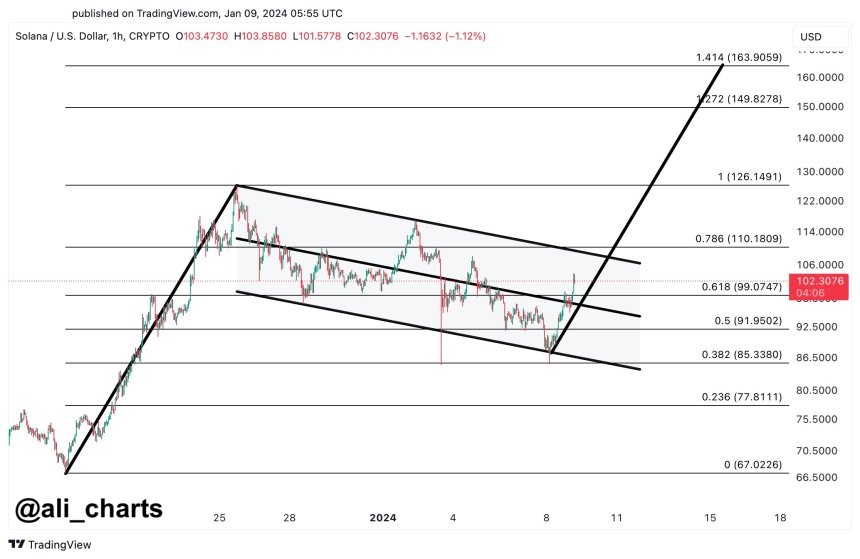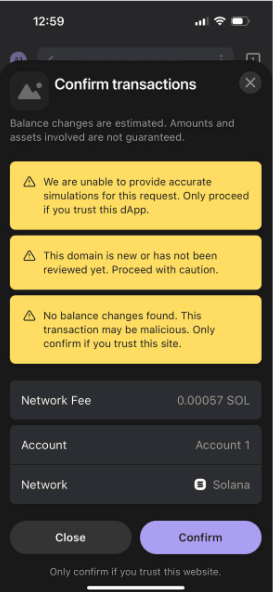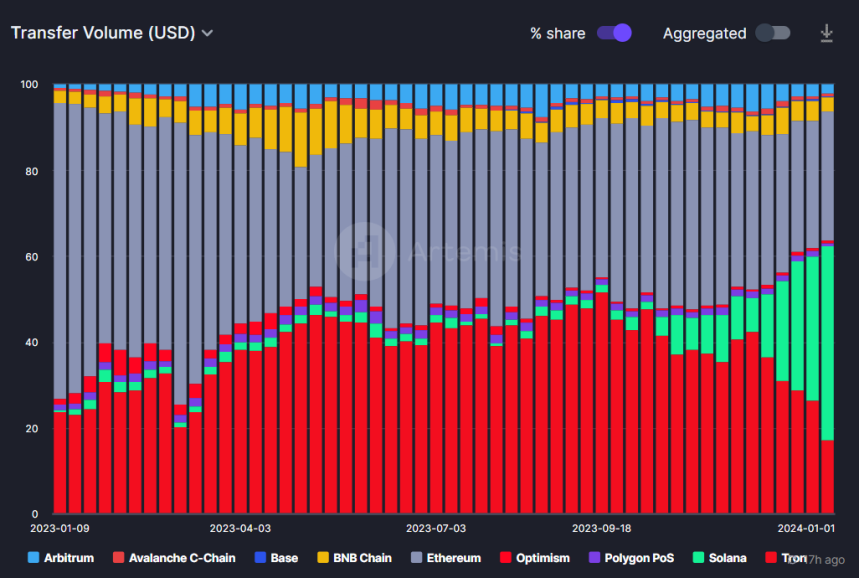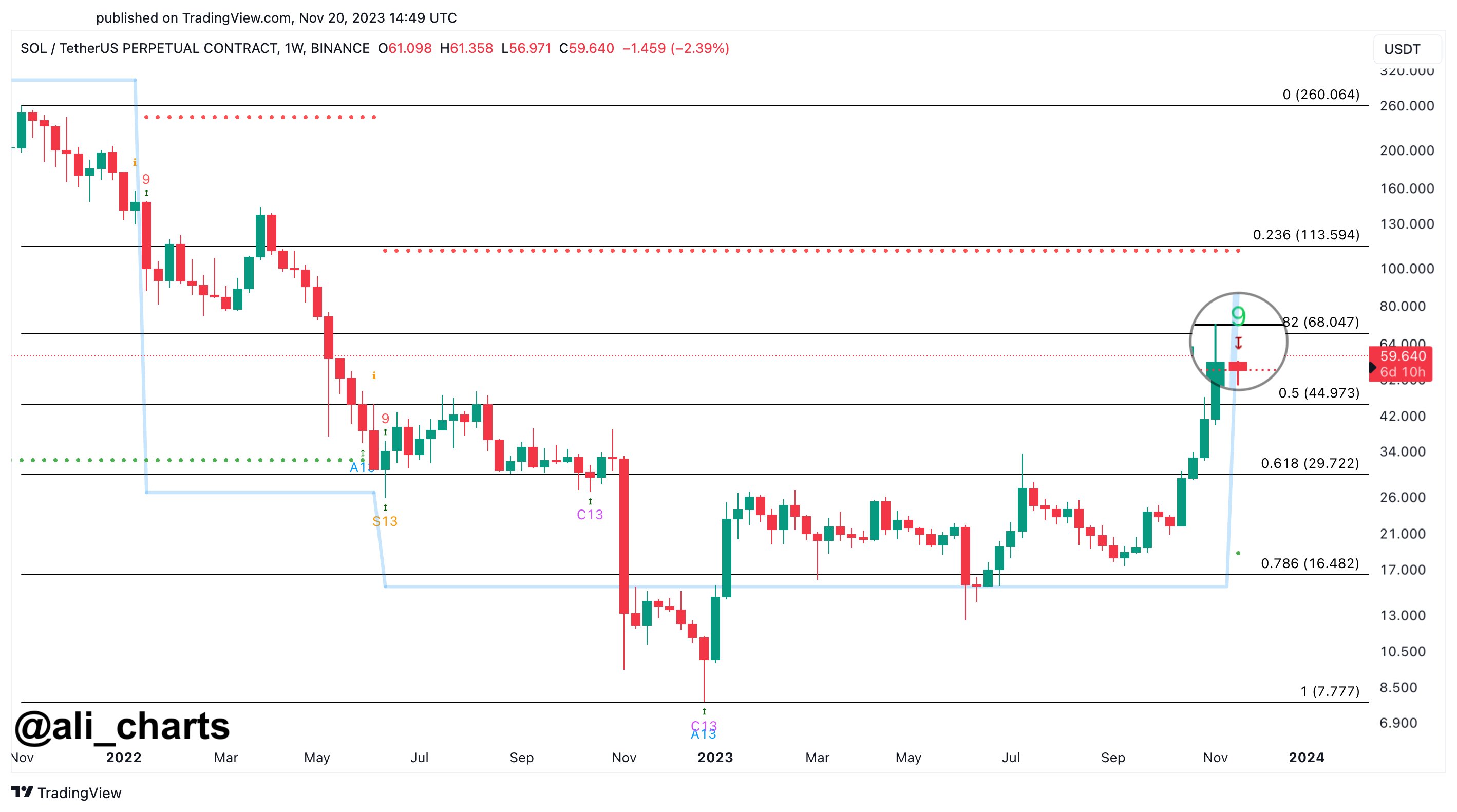In a significant development, FTX bankruptcy trustees have reportedly sold about two-thirds of a $2.6 billion stash of Solana (SOL) at a “deeply discounted price.”
Industry figures such as Galaxy Trading and Pantera Capital were among the investors involved in the deal, according to people familiar with the matter, as reported by Bloomberg.
SOL Tokens’ Four-Year Journey
Per the report, the FTX estate was able to sell between 25 million and 30 million locked-up Solana coins at $64 each, generating up to $1.9 billion in proceeds for the estate.
Under Mike Novogratz’s Galaxy Digital, Galaxy Trading managed to raise approximately $620 million for a fund established to purchase SOL from the FTX estate. According to the report, investors in the vehicle will be subject to a 1% management fee, and the investment will offer a yield through staking.
It is worth noting that the 41 million Solana tokens sold by the FTX estate are locked according to a pre-agreed vesting period, preventing them from being available for trading on the market.
According to Bloomberg, these tokens will gradually become available for sale over the course of four years, which could significantly impact SOL’s price action. However, as the tokens remain locked, SOL’s 739% year-to-date (YTD) uptrend remains intact, and the possibility for further gains remains in the cards.
Solana Sale Garners Interest From Prominent Figures
FTX co-founder Sam Bankman-Fried, convicted of fraud and sentenced to 25 years in prison, was a major supporter of SOL.
As previously reported, Bankman-Fried has actively engaged with guards at the Metropolitan Detention Center, where he is currently incarcerated. He offers investment advice and recommends SOL as a potential opportunity, demonstrating his bullish sentiment on the protocol.
The token, which operates on the Solana blockchain, constituted a significant portion of the digital assets stranded on the collapsed exchange, creating shockwaves throughout the crypto markets.
In addition to Galaxy Digital, Bloomberg notes that selling SOL tokens has attracted the attention of Pantera Capital. This $5.2 billion asset manager has reportedly raised capital for a special fund to acquire up to $250 million of SOL from the FTX estate.
Vancouver-based Neptune Digital Assets Corp. also announced the purchase of 26,964 SOL tokens for $1.7 million on March 27. However, FTX creditors are concerned they will be under-compensated in the SOL sale process.
Creditors Dispute FTX Bankruptcy Ruling
In January, the judge overseeing the bankruptcy case ruled that the amount of each claim should be based on what the customer or creditor was owed on the day FTX filed for bankruptcy. At that time, SOL was trading at about $16, well below its current market price.
As the price of SOL rallied in recent months, this discrepancy became a point of contention for some creditors. One creditor, Sunil Kavuri, expressed during Bankman-Fried’s final sentencing hearing that the SOL coins are “our property.”
Another creditor, whose name was redacted in court documents, stated in a written statement that the FTX estate is “giving away money for free to hedge funds.” In a recent interview, Bankman-Fried claimed the following regarding clients’ growing concerns about underpayment:
I’ve heard and seen the despair, frustration, and sense of betrayal from thousands of customers; they deserve to be paid in full, at current price. That could and should have happened in November 2022, and it could and should happen today. It’s excruciating to see them waiting, day after day.
Currently, the price of SOL stands at $175, reflecting a decrease of up to 6.7% within the last 24 hours and over 7% over the past week.
Featured image from Shutterstock, chart from TradingView.com



